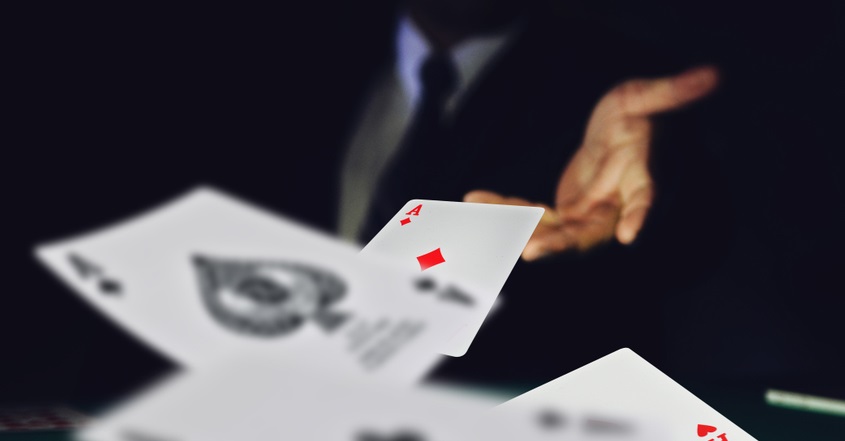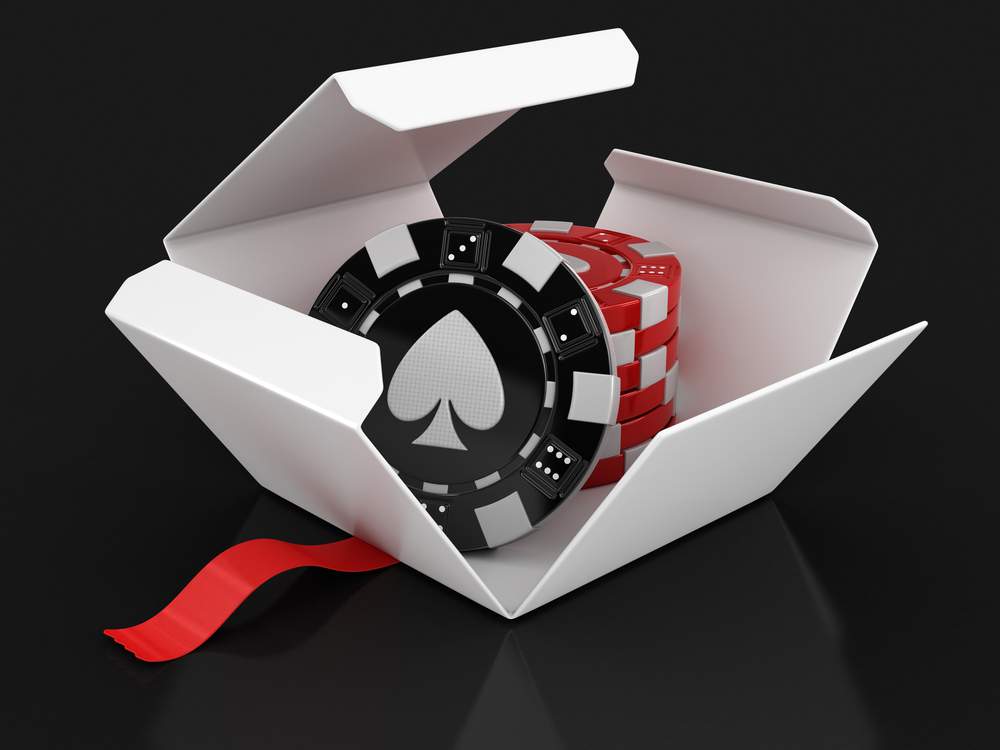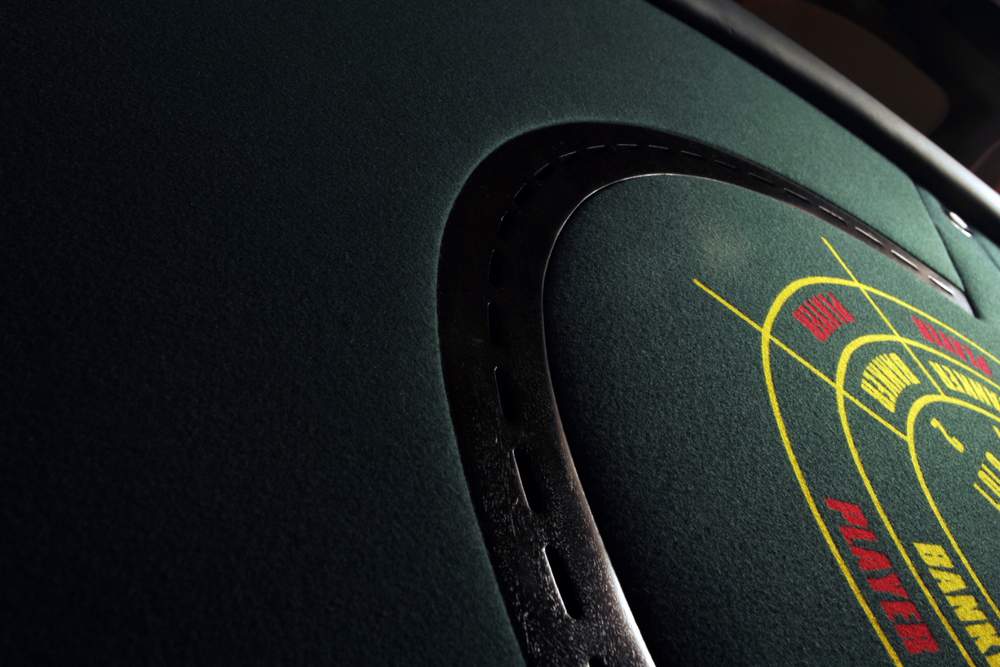

Baccarat is one of the most popular card games, both online and in land-based casinos — and it’s easy to see why the table game has become a darling of casual and seasoned players alike. With the right baccarat strategy, you can help grow your bankroll, raise your winning odds, and take your gameplay to the next level.
You have seen the game in popular media, especially in James Bond movies, thanks to its glitz and glamour. Because baccarat has a relatively low house advantage and is fairly easy to master, it has become a player favorite across the entire casino spectrum, from the mini-baccarat tables in Macau’s Cotai Strip to the high-limit rooms of Monte Carlo and even online.
As far as the best odds go, baccarat is among the top four casino games, alongside blackjack, Jacks or better (the 9/6 variant), and craps. In a lot of ways, you could say it resembles blackjack, but it is much simpler and more exciting. It’s a rookie-friendly game too.
Although it’s partly a game of chance, baccarat has a few nifty tips, strategies, and hacks you can use to dramatically improve your odds of winning. That’s why we put together this Baccarat strategy guide.
Quick History of Baccarat
The fascinating and colorful history of baccarat dates as far back as the 1400s when it was invented by an ardent Italian gambler called Felix Falguierein. Baccarat is derived from the Italian word “baccara” which simply means “zero,” reflecting the fact that all face cards and tens have a value of zero.
Though the game initially began with popular medieval-era tarot cards, these were soon replaced by the standard playing cards, and the game made its way to France where it took the moniker Chemin de Fer, a variant of Baccarat en Banque. Between the 18th century and 19th century, the game of baccarat spread quickly across Europe.
It’s believed that Tommy Renzoni, a write-cum-gambler, brought the game to Las Vegas from Cuba. The rest, as they say, is history. And now, baccarat is permitted in all brick-and-mortar and online casinos in US states where gambling is legal, including Nevada and New Jersey.
The Basics of Baccarat: How to Play
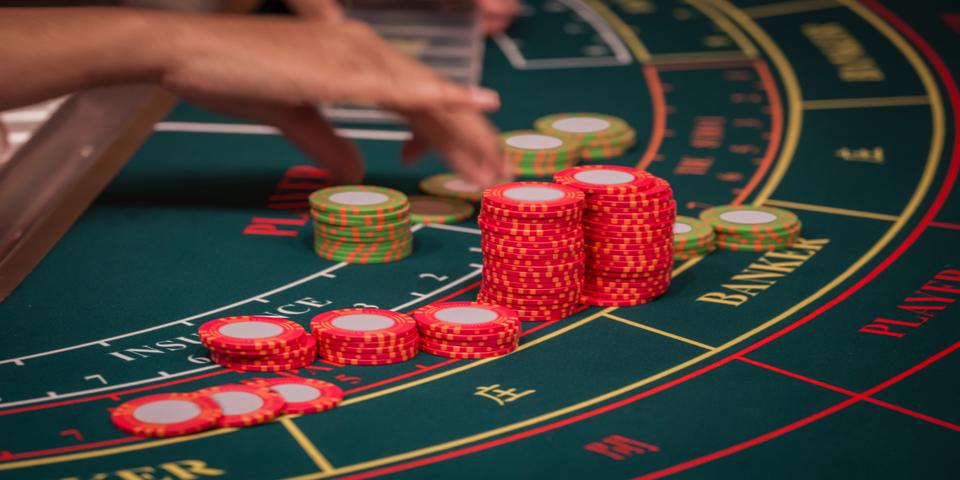
With European appeal and all the glitz and glamour, baccarat can be a little intimidating at first. However, behind the tough exterior, you’ll find a decent card game with only three possible outcomes per hand. In fact, there’s little to no skill required to get started.
Like most table games like Blackjack, baccarat uses three to six standard 52-card decks which are shuffled together and placed in a dealing machine called the ‘shoe.’ Playing the game is as simple as it can get.
Despite what it might sound like, the croupier does all the heavy-lifting, including dealing out the cards from the shoe. All you have to do is place your bet, sit back, and let the fall of the cards decide your fate.
First things first: you have to wager using chips/tokens/checks on the Player hand, Bank hand, or make a tie bet.
The croupier will then deal out two cards to the Player (also known as the Punter), and two cards to the Banker, all of them face up. The goal here is to guess which hand has a count that’s as close to 9 as possible.
● Cards 2 through 9 carry their face values.
● Each of the Tens (10s) and Face (also called Court = J, Q, and K) cards has a numerical value equal to zero (0).
● Every Ace card counts as 1 numerically.
The values of the two cards are added to determine the worth of each hand. If the Player has 2 and Q, for instance, then the hand is worth 2 points. If the Banker has 3 and 5, the hand’s value is 8.
If the total of any hand is more than 9, the count is adjusted by deducting 10 or by dropping the sum’s first digit. Therefore, if the hand’s two cards are 9 and 6, the total comes up to 5 and not 15.
Each hand can hold up to three cards, and there are rules specified by the casino on whether the Player hand or Banker will receive a third drawcard. Most house rules dictate that a Player must stand when the count is 6 or 7.
When the Player hand is worth less than 5, a third card is drawn. If the count is exactly 5, the Player can either stand or call for a third card.
When does a Banker receive the third card? This happens if the Banker’s count is less than 3 or as stipulated by the most favorable odds.
On the other hand, the Banker must stand at any count of 6 or higher.
The Banker may stand or draw a third card if the Bank hand’s count is exactly 3 to a Player’s 3rd card of 9. The same should happen when the Banker’s count is 5 and the Player has received a 4 in the third-card draw.
Baccarat Payouts
Player Hand Bets: You win if the Player hand is closer to 9 than the Banker hand. And it pays double or evens (1:1). That is, a winning wager of $20 on the Player hand wins $20, bringing your total payout to $40.
Banker Bets: If you bet on a Bank hand and it wins, you will be paid evens minus 5% house commission. For example, if you bet $20 on the Banker and it wins, you will get $19 in winnings. In this case, $1 will go to the house as a commission.
Tie Bets: When you make a tie bet, you are essentially wagering that the Bank hand and the Player hand will have an equal count. A winning tie bet pays out at 8:1. So, if you bet $20 on a tie and it wins, you will get $160 in winnings as well as retain the original bet of $20.
One thing to note is that all bets placed on the Banker and Player hand will be pushed if the result is a tie, meaning that neither hands loses or wins. You can decide to leave the bet as it is, remove it, switch it, or reduce/add the chips.
Of course, relevant state and federal taxes may apply.
The One Baccarat Bet to Always Avoid
Baccarat is overall one of the safest casino games to wager on, but some of its bets are safer than others. More specifically, avoid the tie bet at all costs as it’ll drain your wallet like crazy.
Why?
The tie bet may have the biggest payout — it pays 8 for 1 — but also has, by far, the worst odds of winning. The house advantage for this type of wager is a whopping 14.36 percent. That means if you were to make a hundred wagers of $1, you could theoretically lose $14.36.
That’s a lot of money. After all, the core objective of gambling is to enrich yourself, not lose your money to the house.
By comparison, bets on a Banker (which pays 1:1) come with a very favorable house edge of 1.06 percent. What that means is that you will lose an average of around $1 for making one-hundred $1 bets on the Bank hand.
If paying a 5 percent commission on the Banker irks you, it might be best to try your luck on the Player hand, which comes with a marginally worse house advantage of 1.24 percent.
The bottom line is that a tie bet should not be a part of any optimal baccarat strategy.
Betting With the Banker: The Simplest Baccarat Strategy
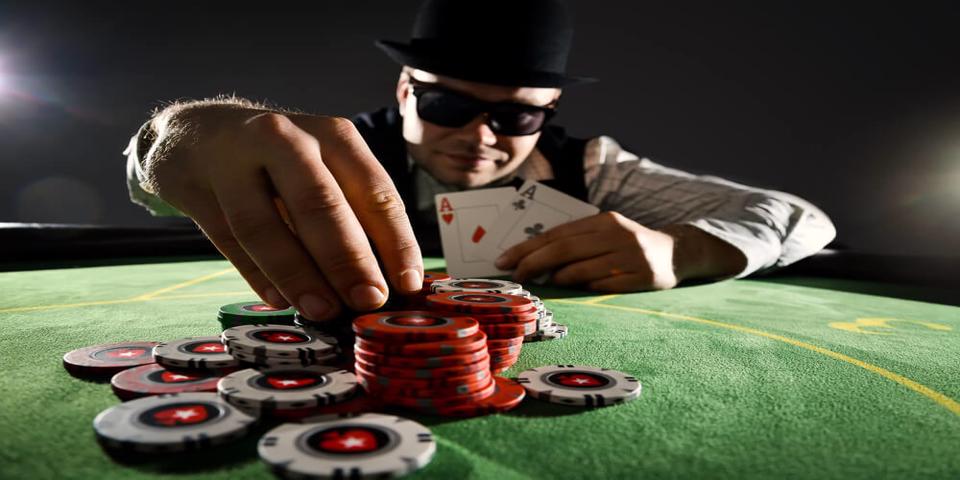
Unless you are new to baccarat, the chances are you have heard that you “should always wager on the Banker.” This isn’t just one of the most cited gambling quotes.
Betting with the Banker is not only the simplest but also the safest baccarat strategy. And it all boils down to pure math.
First of all, the theoretical house edge for betting on the Banker, as mentioned earlier, is 1.06 percent. By the same token, the return to player (RTP) or payout percentage for Banker bets is a staggering 98.94 percent.
If we assume that you made a hundred $1 bets on the Bank hand, then you will get $98.94 back. It’s worth keeping in mind that this metric is theoretical and it only tells you whether a specific bet is better or worse than another.
The RTP of a bet on the Bank hand of 98.94 percent suggests that it’s slightly better than a Player hand wager, which has an RTP of 98.76 percent. Similarly, a bet on a tie is worse than either because of its relatively low RTP of 85.64 percent.
The reason betting on the Banker is always a good idea goes beyond the house edge and RTP, though. Let’s take a closer look at the math of the Banker betting baccarat strategy:
Assuming that the casino is using eight standard 52-card decks; Tie bets pay at 8:1; Banker bets pay evens minus 5 percent commission; and that there’s a 1:1 payoff for Player bets, then the math says:
● Player hand loses 45.87 percent, wins 44.63 percent, and ties 9.51 percent.
● Bank Hand, on the other, loses 44.65 percent, wins 45.87 percent, and ties 9.51 percent.
If we remove all hands that tie from the equation, then the Bank hand loses 49.32 percent of the hands, while it wins 50.68 percent. On the flip side, 50.68 percent of Player hands lose, while 49.32 percent win.
Against this mathematical background, it’s clear that Bank hand bets are more likely to win than lose, while Player hands lose more frequently than win. To correct for this, there’s a 5 percent commission on all winning Banker bets.
Even when you include the 5 percent charge and ignore hands that tie, the Banker hand’s house advantage is still a very favorable 1.17 percent. In other words, every $100 worth of Banker bets will result in a theoretical loss of $1.17, while similar Player hand wagers will result in a loss of $1.36.
Numbers don’t lie: you’re more likely to win if you trust your money with the Banker!
Don’t get it wrong, though. Betting solely with the Player has an almost equally low house edge of 1.36 percent, which means it can also be a viable baccarat strategy.
The Martingale System and Other Betting Strategies
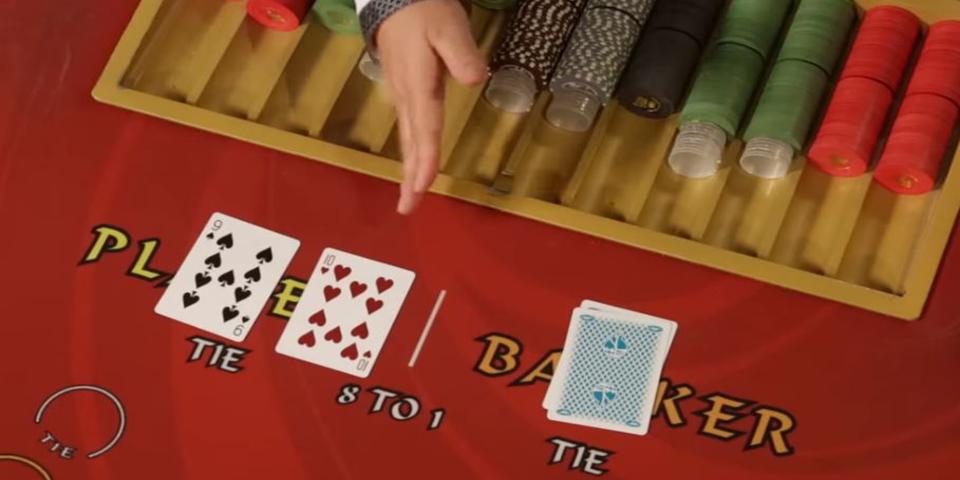
In addition to eliminating the tie bet and always betting with the Banker, some advanced betting systems can work perfectly into your baccarat strategy.
Perhaps one of the most widely leveraged betting strategies is the Martingale System.
Made popular in the 18th century in France, the Martingale System is a common system of progressively adjusting bets in casino games that is particularly conducive to baccarat. It can also work like a charm when it comes to playing other table games like roulette, blackjack, and even craps.
Beyond gambling, the system has been employed in trading FX, securities, and other investment vehicles that call for long-term profit expectancy.
The Martingale System was devised by one French mathematician by the name Paul Pierre Levy, although some people think it was introduced by an unscrupulous casino owner called John Martingale.
How does it work? The Martingale System borrows from the theory of Mean Revision, which says that historical returns and asset prices (such as Gold, Oil, Stock, FX, etc.) will revert to the long-term average or mean.
In the game of baccarat, in specific, the system assumes that the payout will get as close to the bet’s RTP in the long-run. In layman terms, a particular hand is bound to win at some point.
When you get down to brass tacks, the traditional Martingale System says that you should double down on the next wager if your last bet lost.
For instance, if you place a $10 bet on the Bank hand and it loses, then you should put a $20 wager next on the same hand. But it doesn’t end there.
This theory suggests that you should continue until you win. So, if the next bet of $20 loses, you should double to $40 on the subsequent bet, meaning it’s four times the original wager.
When you make a win, then you take your winnings and revert to the original bet. From our example, if your $40 wager on the Banker wins, then you should go back to your original $10 bet.
The big idea behind the Martingale system is that the bettor will win the biggest bet of the cycle. In our case, the Player won a total of $80 (inclusive of the stake) for a total bet of $70 ($10+$20+$40).
As you can see, the system has a near-100 percent success rate in the long-run. Despite looking like a sure-thing, however, the Martingale System comes with a few risks and shortcomings that include:
● It’s not ideal for someone with a small bankroll, as you can run out of money quickly or before you can hit that much-awaited win.
● If you experience too many successive losses, doubling your bet may reach the table limit. That’s certainly a huge bummer because you won’t get a chance to double your wager once more.
● You may have to bet way too many times to win a decent amount of money.
● Some casinos don’t allow the use of the Martingale System.
Lucky for you, there are a few other systems that have been proven to be just as effective, including Fibonacci, Paroli, Labouchere, and Doubles.
The Fibonacci Strategy
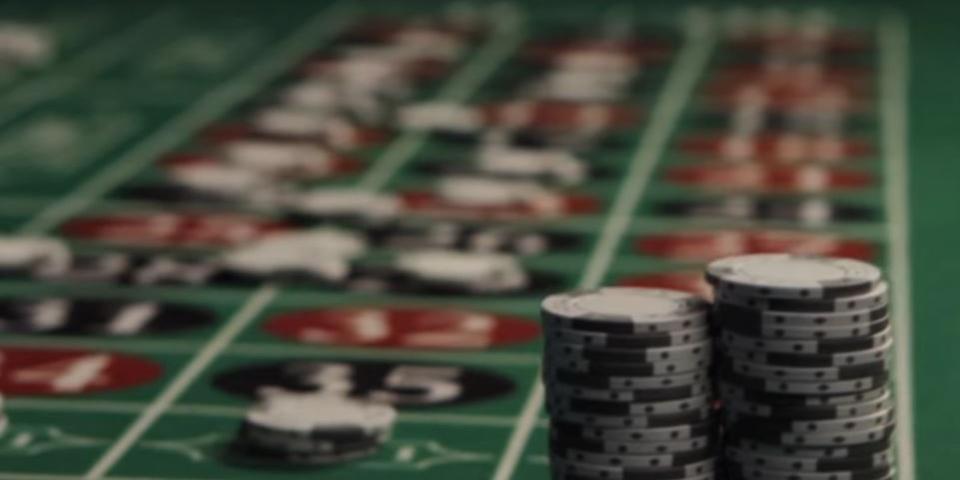
The Fibonacci baccarat strategy is a betting system in which the amount to bet after a loss is dictated by the Fibonacci sequence. This is a famous natural number sequence in which the next number in a progression is determined by the sum of the previous two numbers.
The sequence looks something like this: 1, 2, 3, 5, 8, 13, 21, 34, 55, etc.
Unlike the Martingale system, there’s a great deal of math that goes into this strategy. However, you don’t need to be a math guru to put this system into practice.
Here’s the gist: for every bet that you lose, you should increase it on the next wager. This cycle continues until you hit a win. Like the previous system, the Fibonacci system assumes the theory of mean revision is true.
Well, you might ask yourself, why would I want to carry on increasing my bet on a given hand when I have already lost money? The idea is that if you keep making a subsequently bigger bet in spite of your losses, you will end up winning back your last two losing bets at some point.
An example might suffice here. Let’s say you started with a $10 bet on the Player hand.
If you lose your first two wagers, then your third bet should be 3x your original wager, i.e. $30 (3x$10). Thus, if the third bet wins, you will get $30 in winnings, meaning that you will have won back what you lost in the first two wagers.
If your losing streak goes to three in a row, then your fourth wager should be $50 or 5x your original bet. If lady luck dances in your favor and you win the fourth round, then you will receive $50 in winnings, which is the sum of the last two losing hands, i.e. $20+$30
It’s simple: bet $10 until you lose, and then wager $20 until you lose. If you lose the $20 bet, go ahead and increase it to $50, then $80, $130, $210, $340 … just follow the Fibonacci sequence.
When you win, no matter the stage, you should revert to your original $10 bet.
The Paroli System
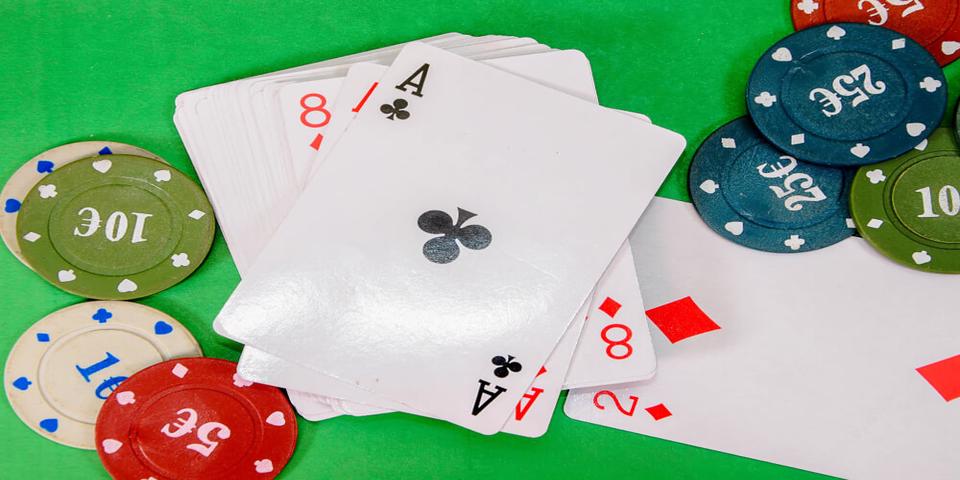
The Paroli baccarat strategy is the exact opposite of the Martingale system. In fact, some texts refer to it as the Reverse Martingale system. It has been used dating back to 16th century Italy where it was leveraged on a card game called Basset.
Today, it’s highly effective in betting on baccarat, roulette, and other odds bets, including Pai Gow poker, Sic Bo, and Craps.
A form of a positive betting system, Paroli simply dictates that you should double your bet every time you win until you lose. The core objective of this system is to gain 3 wins in a row.
Here’s an example:
Step #1: bet $10 on the Player hand until you win. Then double to $20.
If you lose, return to step #1. Otherwise, go to step #2.
Step #2: Bet $20 until you win. Then bet $40.
If you lose, go back to step #1. If you win, double again and bet $80
Step #3: Bet $80 until you win.
Return to step #1 if you lose. If you win, also go back to step #1.
This goes on and on until you lose or win three times in a row, and then the circle begins.
The Labouchere System
The Labouchere system goes by several other names, including the American Progression, the Cancellation System, or the Split Martingale.
First introduced by an avid French roulette player name Henry Labouchere, this system works best for even money betters in casino games like baccarat, blackjack, and even sports betting.
If you’re looking for a simple additive baccarat strategy, however, the Labouchere system may not be for you. That’s because it’s more complex than most systems we’ve mentioned here, so you will have to put in the work to master it.
As a negative progression system, it encompasses increasing your wager after every lost bet. The key principle is that you should be able to recoup the losses after a losing streak with a few wins, and not just one win as in the case of Martingale.
How does it work?
Rule #1: Create a sequence
This can be any sequence of your choosing. For our example, let’s use 1-2-3.
Rule #2: Bet the amount equal to the sum of the last and first number on the sequence
In this case, you will bet $3, which is the sum of $1 (first) and $3 (last). Wouldn’t the sum be $4?
Rule #3: Cross off winning numbers after a win
If your bet wins, then you eliminate the first and the last number on the sequence. You’ll remain with only $4, which means the next bet should be worth this amount.
Rule #4: Add a number to the sequence after a loss
If your wager loses, then you have to add $4 to the end of the list, so your sequence becomes 1-2-3-4. From here, your next bet should be $50, the sum of the first and last numbers.
The same four rules should be applied to every bet. Lose, and you include a number to the end of the sequence. When you win, remove the last and first numbers. That’s until you remain with a single number.
The D’Alembert System
The D’Alembert system was devised by Jean le Rond d’Alembert, a well-known 18th century French theorist. It’s a positive progressive system, quite like the Martingale, but it’s designed to cushion you from making quick and steep losses, all while recouping lost bets.
First, you need to choose your base unit, which is usually the value of a single chip or token. If you’re playing with $1 chips, then your base unit is 1.
For every bet you lose, you should increase your next wager by 1 chip. For instance, if you started with a $4 bet and lost, your next wager should be $5.
If you win, keep making your original $4 bet until you lose. Then, again, you increase each of your losing wagers by 1 chip.
For every winning coup, you should take away one chip. For instance, if you had increased your bet to $7 after three losses in a row, then remove one chip to bring your next wager to $6.
The D’Alembert baccarat strategy hinges on the principle that losses and wins are going to eventually even out.
How to Handle Your Bankroll
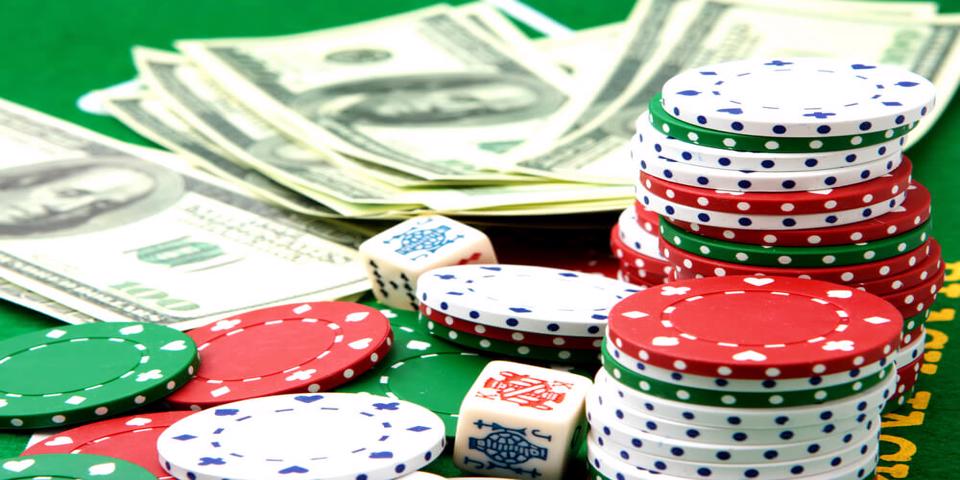
Money management is a skill that every bettor should master, but this is even more the case when it comes to playing baccarat.
No matter your baccarat strategy, here are some tips to keep in mind in order to stretch your bankroll and boost your odds of winning.
Tip #1 – Set Win/Loss Limits, and Stick to Them
Every good thing comes to an end at some point, including a winning streak. That’s why it pays to set win limits when playing baccarat. Setting this limit will not only protect your bankroll but also help sharpen your baccarat strategy for winning.
Because all baccarat bets come with a house advantage, you’re bound to lose in the long run. For this reason, you should stop immediately when you reach your win limit, so you can lock in your profits.
For instance, if your win limit is $200 and you start with a bankroll of $100, you should step aside when you hit a total of $300. Perhaps you should take a breather, exercise, go for a drink, or even take a walk.
The same should be true for losses – set a loss limit and stick to it.
If your loss limit is set at $80, you should count your losses when your bankroll reaches $20. Log off your online casino account or switch to another game.
Tip #2 – Break Down Your Bankroll
The odds are good that you play multiple casino games. As such, each game should have a bankroll of its own. This is true for online players and those who visit land-based casinos.
If you have set aside $100 for baccarat out of your $500 bankroll, be sure to check out of the table as soon as the balance hits $400 or when you reach your win/loss limits.
Similarly, you can play baccarat in sessions of one hour, two hours, etc. Each session should have a fixed bankroll, win limit, and loss limit.
Tip #3 – Wager on Low House-Edge Bets
In the game of baccarat, your choice should be simple: always bet with the Banker. This should be your general rule of thumb because betting on the Bank hand has a favorable house edge of 1.06 percent.
You should absolutely steer clear of tie bets, as they have a very high house advantage of 14.36 percent.
Don’t shy away from betting on the Player hand. Its RTP of 98.76 percent is marginally lower than that of a Banker bet (RTP= 98.94 percent).
Tip #4 – Avoid All-In Bets
Obviously, you don’t want to put all your eggs in the proverbial one basket. Your bankroll is your capital and it should last long enough for you to see good returns.
Unlike what’s portrayed by Hollywood films, putting all your money on a single hand is a terrible idea. There’s no glamour in losing your entire bankroll in one go.
Tip #5 – Use the Right Baccarat Strategy
The Martingale system may be a good fit for high-roller players with huge bankrolls. However, it’s not so great for someone with a bankroll of $20 on a $1 minimum table.
Instead of risking the loss of the whole bankroll in a few rounds, such a bettor may benefit from using the D’Alembert betting system that’ll reduce the chances of making fast and steep losses.
Different Versions of Baccarat
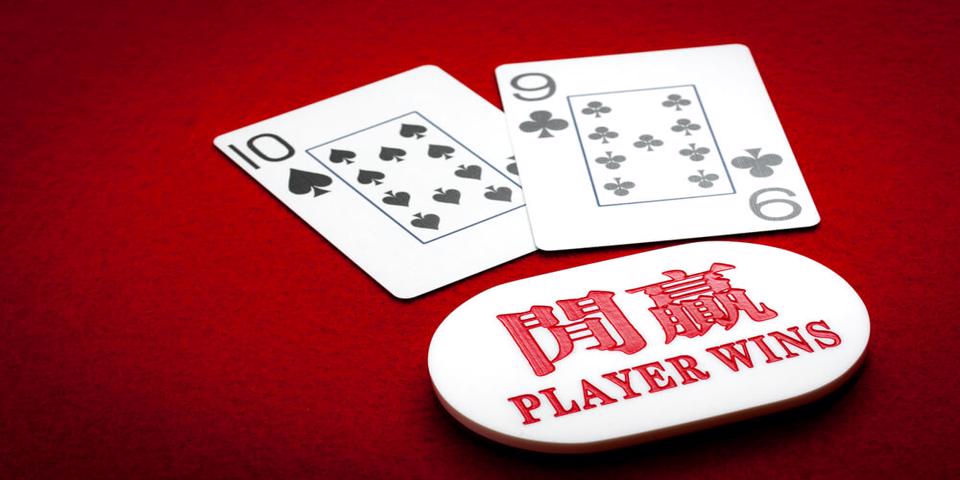
There are multiple variants of baccarat available in brick-and-mortar and online casinos, but the most notable ones are Chemin de Fer, Punto Banco, and Mini Baccarat.
Punto Banco
Also called American Baccarat, Punto Banco is the version of baccarat that we have been discussing in the above examples. It’s popularly played in casinos in Macau, Australia, North America, and other places, including gambling sites.
As stated earlier, you can place a bet on the Bank hand, Player hand, or a tie. What makes Punto Banco stand out includes the following characteristics:
● Both the Bank and Player hands are executed according to fixed house rules.
● The house always banks the game.
● A 5 percent commission is charged on all winning Banker bets.
In other words, the decision when a third card should be drawn rests upon the casino and not the Player. That’s the defining characteristic of Punto Banco.
Chemin de Fer
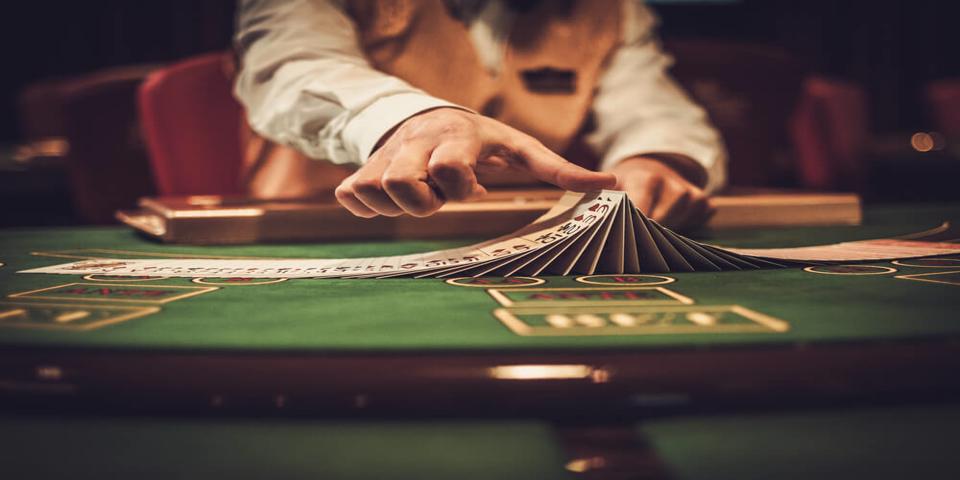
Interestingly, the phrase “Chemin de Fer” is French for “the railway” or “railroad.” This is a version of baccarat that is most played in French casinos.
Also called chemmy, Chemin de Fer’s rules are almost the same as Punto Banco. There are only two differences.
● Players have the option of becoming the Banker, so they can be in charge of the Bank’s hand.
● Players can have a say on whether the Player hand or the Banker should draw a 3rd card.
Usually, 6 standard 52-card decks are shuffled together. After that, one player is chosen to be Banker, with the option of all players taking turns being a Banker.
The designated Banker will decide how much he’s willing to bet, and then all players take turns mentioning the amount of money they are willing to wager. The bettor with the highest bet will be designated the Player.
One player may level up with the Banker on the amount, and declare “banco,” which means all other players except the two will be excluded from the round.
The croupier will deal two facedown cards each to the Banker’s hand and the Player hand. The two respective players will look at the cards in their hands.
● If either of the hands has an 8 or 9, the hand wins and the round is over.
● If both hands are not an 8 or 9, the bettor responsible for the Player Hand will choose whether to stand or draw a third card.
Once the Player hand is complete, the Banker will decide whether to stand or draw a third card. After the Bank decision has been made, both the Player and the Banker will turn over their cards to check who the winner is.
In the game of Chemin de Fer, the Player typically stands on 6 and 7, draw on 2, 3 and 4; and either stand or draw on 5.
Because the players have a big say in the direction of the game, using betting systems like Martingale, Poli, Fibonacci, etc. can be very tricky.
Mini Baccarat
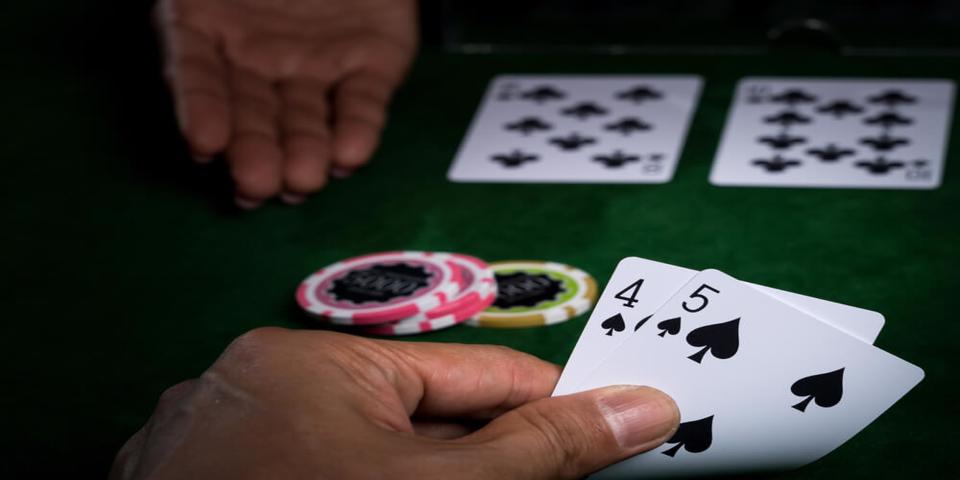
Mini baccarat, as the name suggests, is a watered-down low-limit version of the full-size Punto Banco (also called Big Baccarat).
In a land-based casino, the mini-baccarat tables can be found on the main floor adjacent to the blackjack tables. Each mini-baccarat table can seat between six and seven players.
Unlike Big Baccarat which features two or more bankers, this version has only one dealer. Also, players are not allowed to be the Bank and they can deal out cards.
For this reason, mini-baccarat games are usually quicker than Punto Banco. Even still, the same rules and baccarat strategy can be applied to the game.

